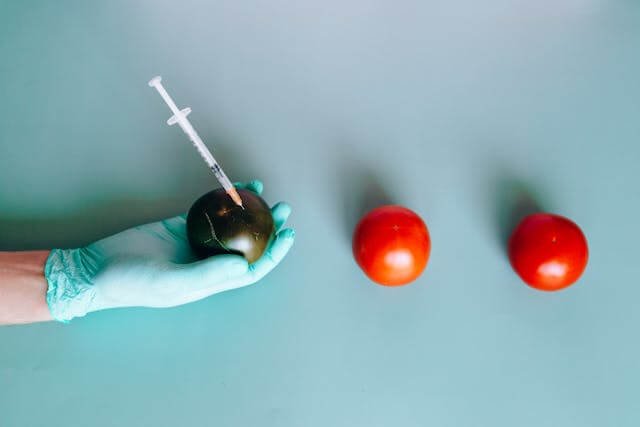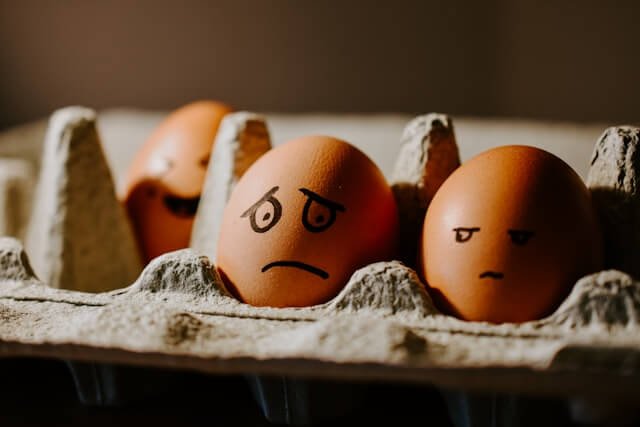Physical Address
304 North Cardinal St.
Dorchester Center, MA 02124
Physical Address
304 North Cardinal St.
Dorchester Center, MA 02124

What if the food you trust to nourish you is quietly waging war on your body? The phrase “you are what you eat” has taken on a chilling new meaning in a world where meals are laced with hidden poisons—toxins, synthetic additives, insect derivatives, and contaminants that slip past labels and into your daily diet. We’re not eating to thrive anymore; we’re eating to survive a system that’s normalized the unthinkable.
From legally permitted filth to lab-grown meat with a dark secret, the food industry has turned our plates into a battlefield. This isn’t a call to fear—it’s a call to awareness. Let’s pull back the curtain on the silent toxins lurking in your food and ask.
Are you ready to face the truth?
You might have heard the buzz about eating insects to save the planet, but here’s the unsettling reality: you’ve likely been eating them for years—without ever signing up for it. Across the globe, food regulations allow what they call “acceptable levels” of contamination in your groceries. It sounds clinical, even safe, but let’s break it down.
This means insect fragments, rodent hairs, fecal traces, and even human skin flakes are legally permitted in your food, as long as they stay under a certain threshold.
This isn’t a wild conspiracy—it’s policy. In the United States, the FDA permits up to 30 insect fragments and one rodent hair per 100 grams of peanut butter. Chocolate can have up to 60 insect parts in the same amount.
In the EU, the limits are tighter, but the principle remains: contamination is expected, and it’s deemed “tolerable.” These thresholds are set based on what’s “economically unavoidable,” not on what you’d willingly accept if you knew.

And it’s not just accidental contamination—some insect-derived ingredients are added on purpose. Cochineal, or E120, is a red dye made from crushed beetles, used in candies and yogurts. Shellac, made from lac bugs, gives your sweets that glossy finish. Cricket flour is sneaking into snacks and baked goods, often under vague labels like “natural protein.”
The issue isn’t just the presence of these contaminants—it’s the lack of transparency. Terms like “natural flavoring” can legally hide insect- or animal-based ingredients, leaving consumers in the dark. Whether you have allergies, follow a vegan diet, or simply don’t want to eat bugs, your right to choose is being eroded. The real poison here isn’t just what’s in your food—it’s the normalization of secrecy, the quiet betrayal of trust that leaves you questioning every bite.
Lab-grown meat is being hailed as the future of food—a cruelty-free, planet-saving solution to our global hunger crisis. But behind the glossy promises lies a far murkier truth. Also known as cultured meat or “cell-based protein,” this innovation isn’t the clean, ethical breakthrough it’s marketed to be. To grow meat in a lab, you need more than just animal cells, you often need fetal bovine serum (FBS), a substance harvested from the blood of unborn calves during slaughter. That’s right: the “slaughter-free” meat often starts with the death of pregnant cows and their fetuses, a grim irony that undercuts the ethical claims.
While some companies are working on serum-free alternatives, most still rely on FBS, and even the alternatives involve synthetic growth chemicals with unknown long-term effects on human health. The process itself is a feat of bioengineering, genetic manipulation, bioreactors, antibiotics, and artificial scaffolding to mimic real meat texture. But is this “clean”? Is it natural?
Lab-grown meat is marketed with buzzwords like “slaughter-free” and “sustainable,” but it’s a highly industrial product, far removed from the farm. Nutritionally, it’s not proven to be better than traditional meat, and its production requires extreme sterility and additives that raise more questions than answers.
Countries like the US and Singapore have already approved lab-grown meat for consumption, while the EU and UK are still evaluating it. But as this technology spreads, we must ask.
Do we really know what we’re eating? Is this meat, or is it a biotech experiment? And what happens when food becomes a patented product, controlled by corporations rather than farmers? Lab-grown meat isn’t just a new food; it’s a new form of control, and we’re not being told the full story.

Walk into any supermarket, and you’ll see shelves brimming with choices—or so you think. The reality is far more concentrated: over 80% of the global food industry is controlled by a handful of multinational corporations like Nestlé, Unilever, PepsiCo, and Mondelez. These giants don’t just produce food, they shape your habits, cravings, and choices. From the ads you see to the ingredients in your cart, they’re pulling the strings, and their priority isn’t your health—it’s their profit.
These companies churn out ultra-processed foods packed with modified starches, artificial flavors, seed oils, and high-fructose corn syrup, all designed to be addictive. The crunch of your chips, the sweetness of your soda, the creamy texture of your yogurt—these aren’t accidents.
They’re engineered through food science to trigger dopamine in your brain, keeping you hooked. And it doesn’t stop there.
These corporations lobby governments, influence dietary guidelines, and fund studies that downplay the risks of their products. That’s how sugar stayed unchecked for decades, how trans fats lingered in our diets, and how artificial sweeteners became a “healthy” alternative despite growing concerns.
In poorer regions, these food empires push their products under the guise of “nutritional aid,” introducing processed goods into schools and relief programs, creating dependency while expanding their markets.
What looks like choice is an illusion—ten cereal brands might line the shelf, but they often trace back to the same parent company. You’re not choosing; you’re just picking a different logo. These empires thrive on your hunger, your sickness, and your ignorance, turning your plate into a profit machine while eroding your trust in what you eat.
What if your diet isn’t meant to heal you but to keep you just sick enough to need a pill? The connection between food and pharmaceuticals is a vicious cycle, one where the same corporations that feed you also profit from your illness. Ultra-processed foods—loaded with sugars, seed oils, additives, and preservatives- are linked to chronic inflammation, diabetes, heart disease, anxiety, gut disorders, and more. The evidence is clear, yet these foods remain the backbone of our diets. Why? Because a sick population is a goldmine for the pharmaceutical industry.
The same conglomerates that own fast-food chains often have stakes in pharmaceutical companies, creating a loop where food makes you sick, and medicine manages the symptoms. Sugar spikes lead to insulin prescriptions, digestive issues lead to antacids, and brain fog from junk food leads to antidepressants. Instead of addressing the root cause, our toxic food system, modern medicine offers a pill for every problem, numbing the symptoms while the cycle continues. Governments subsidize junk crops, food companies sell you poison, and pharma sells you the cure, all while you’re left spinning in a wheel of dependency you were never meant to escape.
This isn’t a rejection of science—it’s a demand for truth. There are doctors and researchers fighting to change this, but they’re often drowned out by the pharmaceutical-sponsored conferences and industry-friendly policies that dominate the system. If your food makes you sick and your sickness makes others rich, you’re not the customer—you’re the product.
We like to think food contamination is a rare accident, but the truth is far more disturbing: much of what would disgust you on your plate is legally allowed. In the US, the FDA’s Defect Levels Handbook outlines how much contamination is permitted in your food—60 insect fragments per 100 grams of chocolate, 30 insect parts and one rodent hair per 100 grams of peanut butter, and up to 20 maggots in 100 grams of canned mushrooms.
In the EU, the European Food Safety Authority sets similar thresholds under hygiene regulations, though enforcement varies.
These aren’t mistakes—they’re policies, justified as “economically unavoidable” to keep food affordable. But at what cost? Recalls happen, glass shards in chocolate, plastic in chips, even human teeth in bread, but these are just the cases that make headlines. Most contamination goes unnoticed because it’s within legal limits. The law doesn’t guarantee cleanliness; it guarantees a minimum the public won’t protest, largely because we don’t know. When filth becomes policy, ignorance becomes survival, and we’re left thanking a system that prioritizes profit over purity.

The most dangerous ingredient on your plate might not be a chemical—it might be a word. Food labels are a maze of codes and jargon designed to obscure, not inform. “Natural flavors” can mean anything from beaver anal gland secretions (used in vanilla flavoring) to synthetic chemicals.
E120 is an insect-derived dye, cellulose is wood pulp in your cheese, and “mechanically separated meat” is a bone-scraped paste in your nuggets. These terms are legal, accurate, and deeply misleading, protecting companies from backlash while leaving you in the dark.
In the EU, E-numbers like E621 (MSG) and E407 (carrageenan) sound scientific, but they mask substances linked to health risks. In the US, additives banned in Europe are still used, while in parts of Asia and Africa, mislabeling is rampant.
Even in transparent countries, loopholes allow deception through vague language. The system doesn’t need to lie—it just renames the truth in a language you can’t read, ensuring you keep eating without questioning.
Food additives aren’t there for your benefit—they’re there for the industry’s. Artificial colors like E102 (Tartrazine) and E129 (Allura Red) make food look appealing but are linked to hyperactivity and cancer risks, yet they’re still legal in many places.
Preservatives like BHT and BHA, derived from petroleum, extend shelf life but carry potential health risks. Thickeners like carrageenan and polysorbate 80 create texture but can inflame your gut, the root of your immunity and well-being.
These additives don’t nourish—they sell an illusion, masking low-quality ingredients and simulating flavors real food has lost. They’re cosmetic engineering, not nutrition, designed for profit, not health. You didn’t ask for neon-green pickles or wood pulp in your cheese, but the industry decided you’d eat it—and convinced you it’s necessary.

You’ve seen the codes, swallowed the lies, and maybe now you feel the weight of the silence—the silence of governments that approve toxins, corporations that dress filth in flavors, and a society that chooses comfort over truth.
The poison on your plate isn’t just in the food; it’s in the system that keeps you blind. But you’re not just a consumer—you’re the final link in this chain.
Break it. Ask questions, challenge your plate, and look beyond the barcode. Every blind bite is a profit for someone else. The truth is bitter, but it’s the first step to taking back your plate.